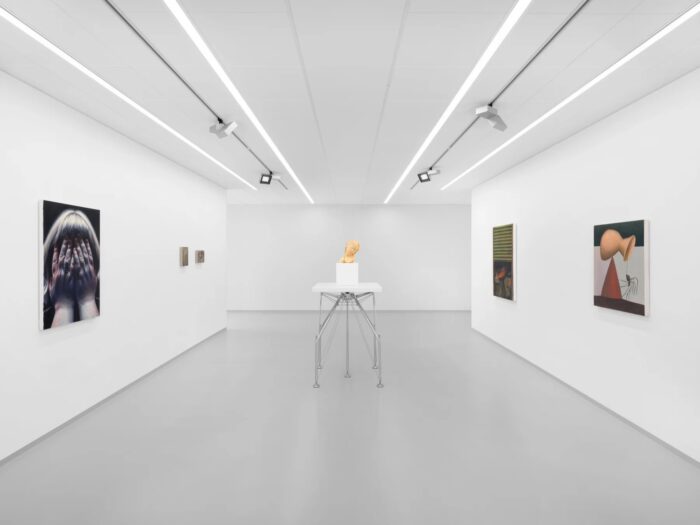
Prophetic Dreams at Kutlesa, Goldau
August 16 – Sept 21, 2024
Barry X Ball, Ginny Casey, Emily Furr, Tommy Harrison, Noorain Inam, Soojin Kang, Hélio Luís, Aramis Navarro, Jacopo Pagin, Lydia Pettit, Gonçalo Preto, Noah Schneiderman, Danilo Stojanović, Alexandre Wagner, Pei Wang, and Hualin Zhang
The universality of dreams acts as a profound connector, threading human experience across the vast expanses of time and place, embodying a collective yearning for meaning. From the earliest days of civilization, oneiromancy—the art of divining the future through dreams—emerged as a vital practice, weaving through the fabric of diverse cultures. This widespread belief that dreams served as messages from the divine or the departed imbued them with a sense of foreboding, often interpreted as ominous warnings.
In the 5th century, the Somniale Danielis, a Latin manual for dream interpretation, gained a foothold despite the Church’s fervent efforts to suppress it. This text, organized as a glossary, offered concise interpretations of key dream motifs, reflecting the medieval society’s fascination with decoding the subconscious. The dream manual, a genre that permeated every social stratum, held a unique cultural significance that transcended the barriers of class and status, speaking to a shared human curiosity and concern.

Fast forward to the 20th century, where Swiss psychoanalyst Carl Jung reshaped our understanding of dreams. Jung proposed that dreams do not obscure reality but rather reveal it through the symbolic language of the collective unconscious. For Jung, dreams were not merely personal reflections but mythic narratives that connected us to something greater. His own dream visions in 1913, hinting at the impending turmoil in Europe, underscored the prophetic power of the subconscious. Yet, Jung also acknowledged that not all prophetic dreams carry doom; some offer guidance, insight, and healing.

This exhibition rejects the notion of a singular interpretation or an easy demystification of dreams. Instead, it invites the audience to delve into the labyrinth of their own subconscious, challenging the boundaries between the earthly and the ethereal. In doing so, it prompts reflection on the nature of premonition and the intertwined relationship between our dreams and waking lives. In times of profound uncertainty, the longing for prophecy becomes more pronounced. Even in an era dominated by scientific advances and technological supremacy, the mysteries of the dream world persist, holding within them a poetic, transformative power. Dreams are a universal experience—intimately personal, yet deeply interconnected—offering a glimpse into the unknown that binds us all.
